I travelled to the Kyrgyz Republic during July and August 2011 in search of empty country and unclimbed mountains. That’s exactly what a found, but there is more to this beautiful and virtually unspoiled country than meets the eye…
Bishkek (the capital) feels as if it’s still in the grip of the Soviet era. Built on a grid system, it has wide streets, monuments galore and large open squares. Beautiful rose gardens and lawns are irrigated with glacial water from the distant mountains. In winter the temperature can plummet to -30°C whereas in the summer it can be above 40°C. The midday summer sun was baking, but there were plenty of shady restaurants to eat, relax, catch up on the jet-lag and protect my skin-grafts from burning. After a day of relaxation, the team headed southeast for quieter climbs…
The steppes are flat and crossed with good quality metalled roads. The mountain tracks are completely different! Winding switchbacks over towering passes strewn with rockfall and dust are the best description I can give. Convoys of articulated lorries tear up and down supplying a remote gold mine, and they throw up huge clouds of chocking dust behind them. Regular stops were also needed to allow the trucks to cool, but a good hosing down with glacial meltwater seemed to do the trick! Kyrgyz Nomads still live in many of the mountainous regions, traveling with their herds of goats and prized horses. Sometimes their traditional Yert tents are dotted along the roadsides where the families sell local produce, whereas others prefer more remote areas to hunt and farm. One of their delicacies is fermented mares milk. If you fancy a strong drink (and a challenge) I suggest you give it a try. If nothing else, it will clear out your lungs! The final few miles into base-camp were interesting to say the least. The ground was boggy with rock outcrops dotted around which made the truck either slip and slide or bounce like a ball. A steep zig zag track descended the valley side and proved almost too much for even a six wheel drive military truck. With a lot of digging, forwards and backwards shunting and a bit of luck we made it safely to our campsite. I always enjoy a fun journey wherever I go. After all, if it was easy to get to base-camp then everyone would be there!
Translated literally as ‘Celestial Mountains’, the Tien Shan mountains stretch across China, India, Pakistan, Kazakhstan, Uzbekistan and Kyrgyzstan. They are relatively empty and in areas, unexplored. Basic maps are available, but few of the peaks have been climbed. The Alpine Club of Kyrgyzstan was interested in our routes and summits as they were writing their first ever climbing guide to the range. The lush green valley in which we established base-camp was dominated on both sides by outstanding climbing possibilities. I have never seen so much Edelweiss in my life! The valley floors were also covered with Gentians, Daises and Dianthus in huge numbers. No-one picks them and their are few grazing animals so the flowers remain undisturbed. There was plenty of tracks from Marmots and Mountain Goats and perhaps even a large Cat of some description. Golden Eagles soared high above our heads, whist Ravens hopped across the Steppes in search of food.
Unlike many mountain ranges in the world, Tien Shan has little in the ways of paths or trails. You have find your own way around and a small group of us decided to walk up the valley, establish an advanced camp and attempt to climb a peak of around 4200m. We set off on a sunny afternoon and camped on an idyllic spot below the peak. The sun set beautifully over the mountains and we hoped for a wonderful climb the next day. The weather was perfect, the skies clear and the mountain in condition. What could possibly go wrong? As we approached the summit, I noticed in the distance a disturbance in the snow. As I got closer, I realised that it was footprints. They were fresh and led straight to the summit. We had been beaten (we found later by a Korean Team) by only a few days. Some of the party seemed dismayed, but we don’t own the mountains and undaunted, I unfurled my Union Flag for a summit photo…
I’ve always been an advocate of keeping the mountains clean. I feel we have no right to dump waste and leave because we don’t or won’t care. I found plastic bottles, cans, gas cylinders and climbing waste strewn over a field near to the mountain and can only suggest that the Korean team and their staff had dumped it. This is not the attitude we need if we are to preserve these beautiful environments for future generations. Beat me to the top if you like, but don’t be irresponsible with the environment!
Standing before base-camp was a peak of 4500m. It has been climbed previously, but would provide an excellent alpine day out. The approach was over a large glacier, followed by steep snow and ice slopes, then open ridges before I stood on the summit. Mountains galore opened up around me for miles, but these flowers caught my eye. There they stood, 4500m up, growing through a crack in the rocks and bringing a gentle beauty to their hard surroundings.
The expedition decided to move further down the valley to explore another area which we hoped would be full of new peaks. This meant a journey in a 4wd van for an hour or so, bouncing round on rough tracks and stream beds. We piled into the back and laid all over the kitbags before leaping up and down as we hit the bumps. I felt quite sea sick by the end of it. We than had to cross a deep and fast flowing meltwater river. Here came a choice. Did we wade across with our gear or try the van? The Kyrgyz driver was determined to drive and set about the river with a vengeance. I had flashbacks of sinking in Borneo once before and thought I was going for a swim, but we made in in great style – well almost. The van was grounded on the far bank and had to be dragged out with a tug of war team effort.
Working with UK and Kyrgyz climbers we put a new route up an un-named 4000m peak. It was loose, open and covered in scree, but what a day. When you have a guidebook, you know where to go, route grading and possible dangers. Here we made our own path and fought hard to complete the Alpine ascent. It took much longer than we thought and my skin-grafts were suffering. By now the long mountain days were having an effect and I was ready to put my feet up, but there was one more mountain left to climb. The final climb of the expedition brought the entire team together on the summit of a 4500m peak. It’s wasn’t a technical climb, but brought everyone together and seemed a fitting end to the trip. We named the mountain ‘Buffalo Peak’ in honour of one of the Kyrgyz Guides who had helped us. It was time to head home and lick my wounds. The weather was changing and my skin-grafts were tired and needed treatment. The mountains of Tien Shan still have thousands more peaks to climb and I highly recommend you get out there and get some bagged…
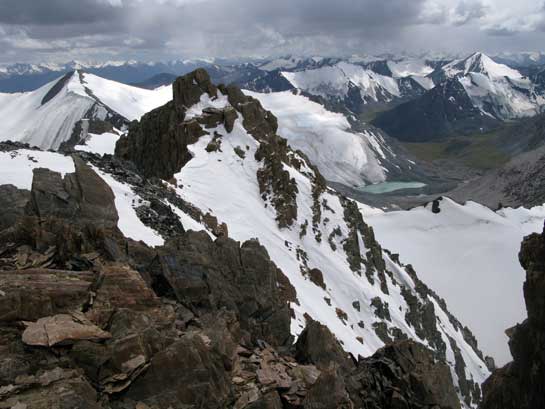
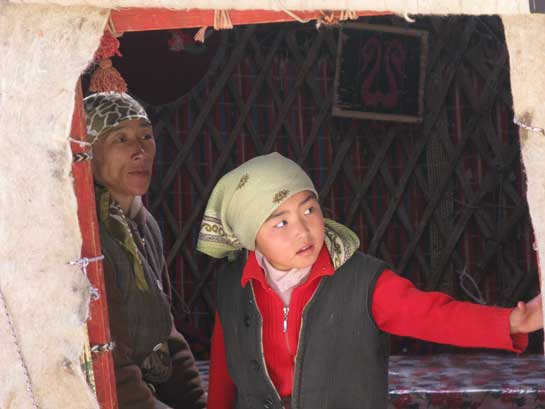
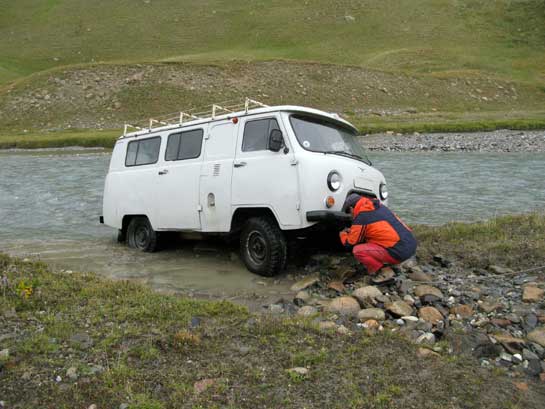
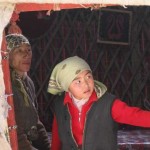
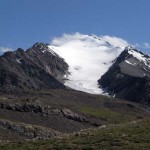
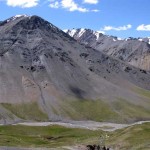
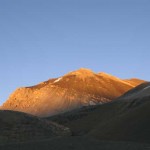
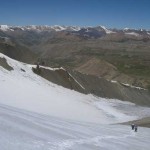
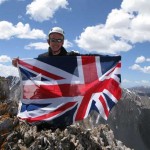
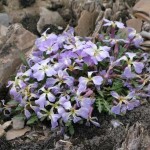
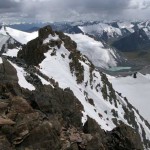
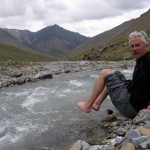
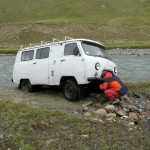
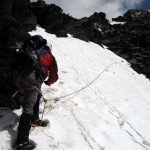
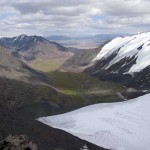
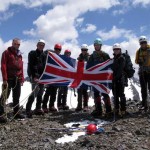
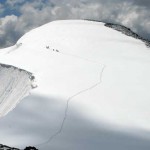
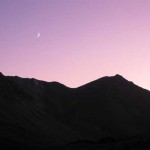
You can contact the Kyrgyzstan Mountaineering Association and ask if the peaks are unclimbed or not.
They are very keen to keep records updated.
I just recieved confirmation from them about a series of peaks not far from Khan Tengri – the ones that we have planned to climb are all “Virgin” peaks
Have a great Trip Ivan..!
Where did you go? Any lat long coords. I’m planning in visiting the area and liked your story. I also like empty clean mountains.
I find with Kyrgzstan the documentation is so difficult to find. So it’s hard to establish what has and hasn’t been climbed.
I don’t have and coordinates I’m afraid, but drop me an e-mail and I’ll send you some contacts that hopefully will be of use.